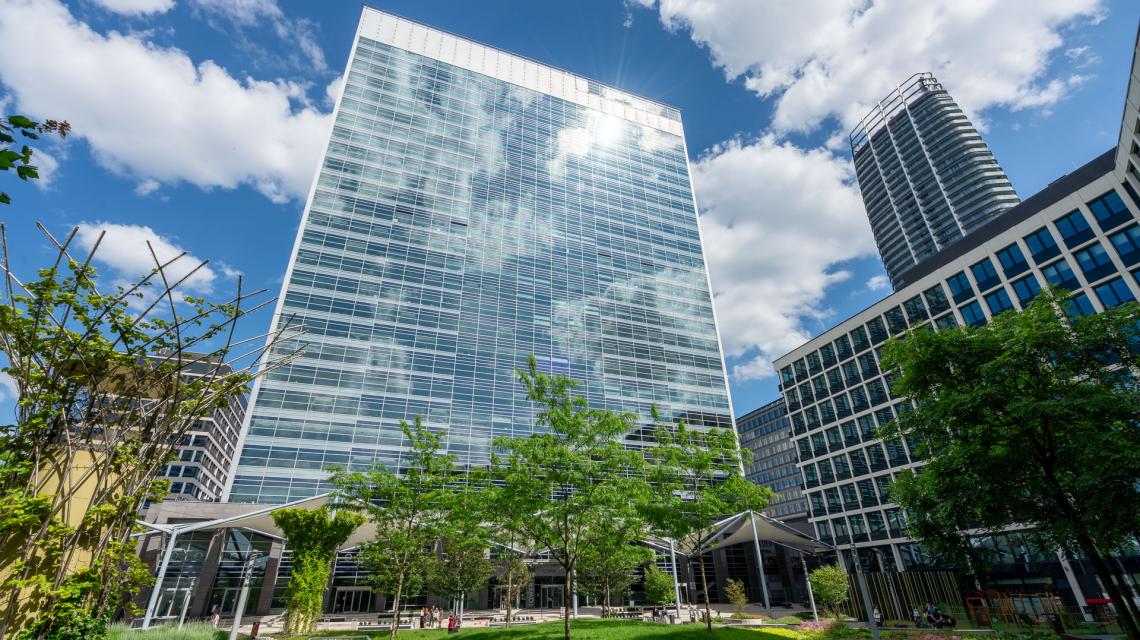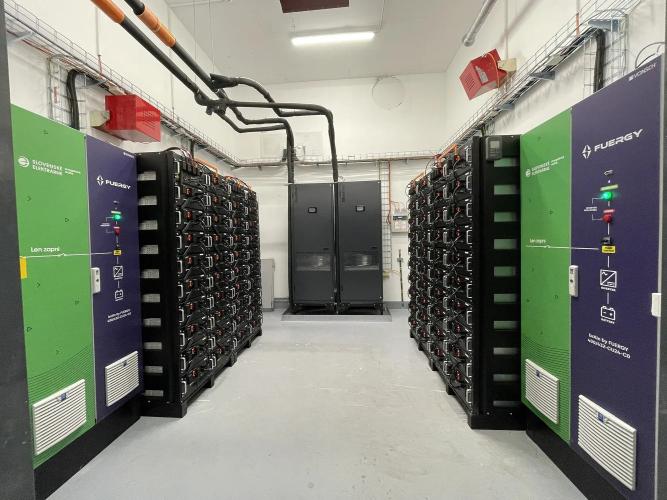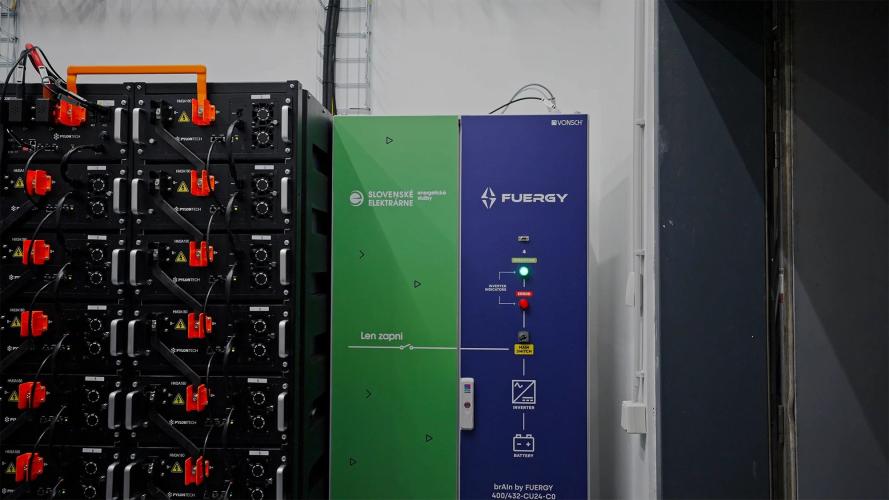Bratislava’s Tower 115 energy update: annual savings of thousands of euros and 400 tons of CO2 emissions

This installation of intelligent battery storage can be rolled out across hundreds of Slovakia’s older admin buildings. Companies, municipalities, cities, regions and the state can enjoy major savings.
Tower 115’s energy modernization has delivered annual savings of several thousand euros and 400 tons of CO2 emissions. Developed by Slovak start-up Fuergy, this innovative large smart battery storage can allocate consumption over time to reduce electricity grid load – for which the building owner is paid. The solution is applicable to hundreds of older administrative buildings in Slovakia, reducing operational costs without costly investments.
Building’s battery makes money and reduces emissions
Admin buildings that lack photovoltaic panel roof space can still save money on electricity consumption and reduce CO2 emissions without paying more. "BrAIn battery storage capacity reflects a building‘s energy consumption – it’s controlled by our intelligent software. This starts charging the battery when the electricity grid needs uptake, and automatically switches off when the grid is overloaded and needs a boost. The network operator remits storage for this support service," says Vladimír Miškovský, Fuergy’s chief business officer.
Battery storage procurement is either financed by the building owner, or the Energy as a Service (EaaS) model is used (e.g. Tower 115 where the total investment was financed by Slovenské elektrárne). "Energy as a service model facilitates the latest technologies to achieve energy savings, even if the building owner does not want or cannot finance the whole investment," says Andrea Pancotti, Slovenské elektráne’s manager of sales and energy services.
69.99 tons of CO2 were saved in just two months (i.e 400 tons p.a.)
As the battery replaces traditional support service providers (that mainly use fossil fuels such as oil or natural gas) in balancing the network, this approach also has environmental benefits. "Far from greenwashing, this represents genuine CO2 savings because fossil fuels stay in the ground. We get exact data from the network operator about the fossil resources we can replace, and certified methodology on how to report theCO2 savings," adds Miškovský. In August and September this year, the Tower 115 battery saved 69.99 tons of CO2 (i.e. 400 tons p.a.). The carbon footprint of battery production is 57 tons, so the storage facility produces net carbon savings in less than two months, which the building owner can report as a carbon offset in an ESG report.
"Tower 115 had a major reconstruction 17 years ago – since then we have continuously modernized the building’s facilities, such as introducing LED lights and intelligent elevators. Battery storage is a game changer that will enable us to keep pace with newer buildings," says Marián Židek, JTRE project manager.
Large-capacity battery solution with 1.5+ gigawatt hours/p.a. consumption
Since opening in 1984 until just recently, Tower 115 was one of the three tallest buildings in Slovakia. Its 28 (1,390 m2) floors include offices, meeting rooms, storage areas, retail, restaurants, and services. The building was renovated in 2004-2006, and its current annual electricity consumption is 4.7 gigawatt hours – which exceeds the minimum requirements for battery storage. "A smart battery storage (over 100 kWh capacity) works optimally with 1.5-gigawatt hours consumption p.a. Buildings with lower energy consumption can be connected to a large-capacity battery or have their own smaller batteries, which we can also connect physically or virtually and control as a whole," explains Miškovský.
The modernization process begins with an initial energy audit and assessment of electricity consumption, operating technologies, and reserved capacity, while potential own energy source - e.g. photovoltaics - is also considered. At Tower 115 this resulted in a storage design with optimal 432 kWh capacity. The next step was an inspection of the installation site to determine whether any additional structural or electrical modifications were required, followed by the installation of batteries and other components at the main substation storage. The modernization process took less than six months.
Battery as backup
Energy audits can also deliver additional savings to building owners by revealing incorrectly set fees, such as unnecessarily high reserved capacities that increase fixed monthly fees. Battery storage can also act as a backup source: unecological diesel generators can be replaced by batteries to cover power outages, while energy flow will also remain constant even during micro-outages. "The building owner can use the battery capacity for paid network support services, or set some aside as a backup – in which case the battery will deliver less earnings," explains Miškovský.
Tower 115’s battery storage
- 7400 kg non-flammable batteries (different design than e-cars), BMS (battery management system), inverters and other electrical components
- 700 kg cables
- 13-strong team, 160 hours and 30 km covered during installation
- Annual CO2 savings of over 400 tons (equivalent to 19,047 mature trees)



